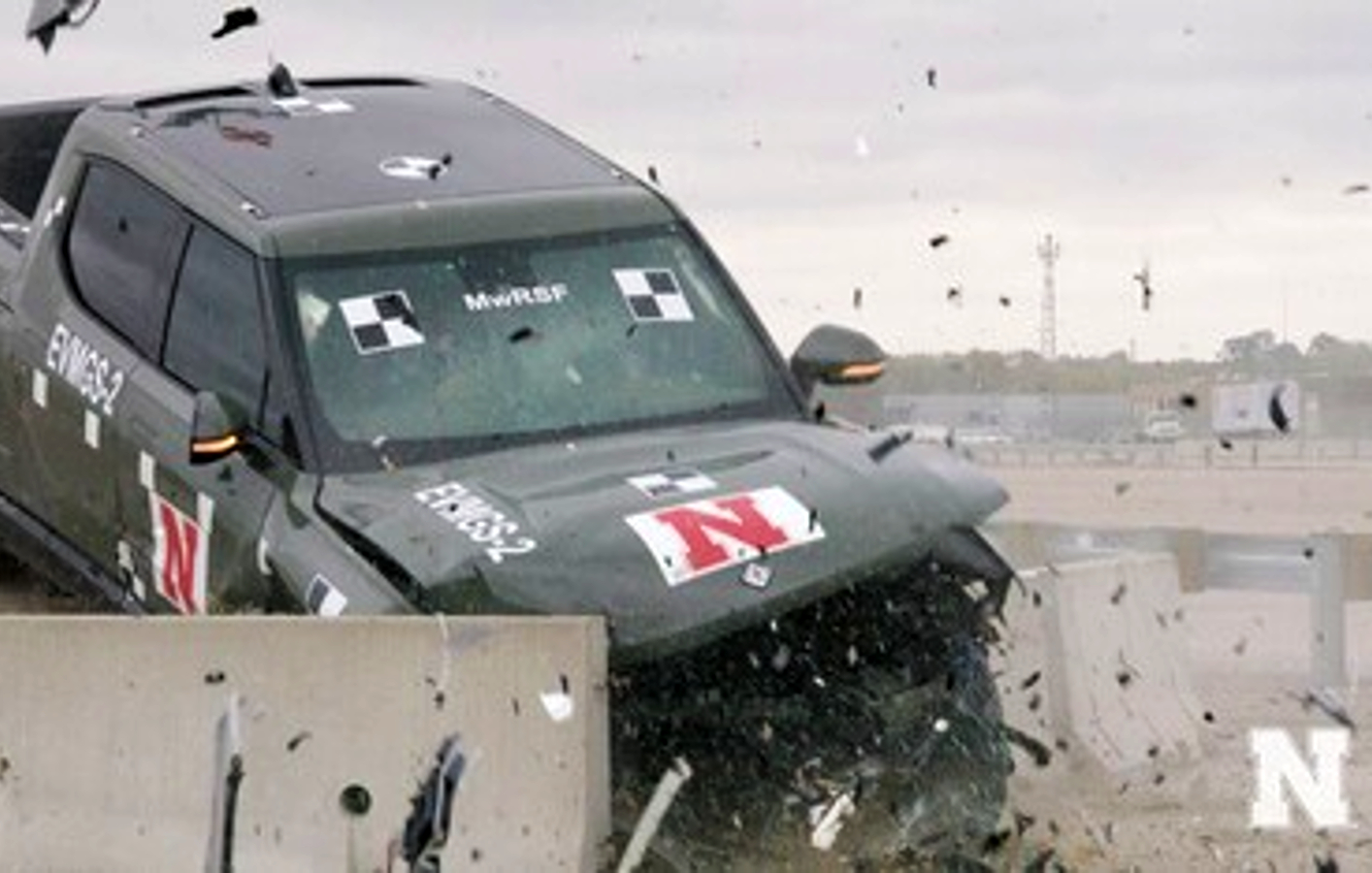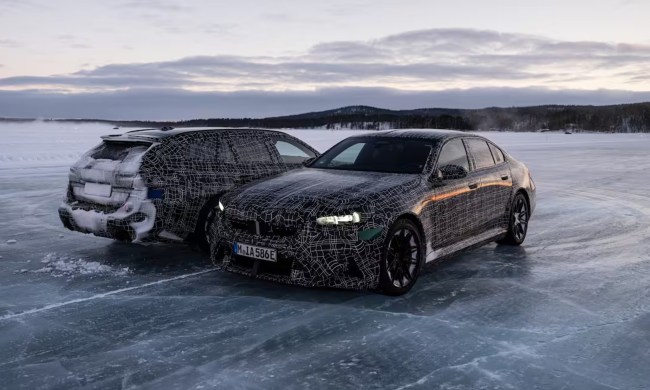
Better late than never, but it’s a few decades late to start worrying about whether highway guardrails and other roadside barriers are strong enough to prevent vehicles from running off the road. Recent research published by the University of Nebraska-Lincoln (UN-L) called out EVs for their battery weight, questioning the safety of U.S. roads and the capability of military defense due to rapidly increasing numbers of electric vehicles (EVs).
The Midwest Roadside Safety Facility (MwRSF) at UN-L tested roadside crash barriers by driving a 7,000-pound plus 2022 Rivian R1T into the barrier at 60 mph. As you can see from the still images captured from a video of the test, the Rivian EV slammed into, up, and over the barriers. Given the extensive damage from the crash, it’s unlikely the Rivian went much further, but the barriers did not prevent the vehicle from breaking through.

Why it’s essential to focus on EVs and crash barriers
EVs, in general, weigh more and have lower centers of gravity than cars with internal combustion engines (ICEs). The extra weight comes from the dense batteries, and the center of gravity is lower in EVs because the batteries are typically stored below the vehicle floor. According to the MwRSF report, EVs “typically weigh 20% to 50% more than gas-powered vehicles, with lower centers of gravity.”
The source of the weight difference range statement isn’t specified in the UN-L news story. However, comparing the weights of a 2023 Tesla Model 3 and a 2023 Toyota Camry, for example, and taking into account the lowest, highest, and average weights of the several variants of each model, the Model 3 EV weighs 16.7%, 12.6%, and 14.6% heavier, respectively, than the Toyota ICEs. So, it is heavier, but not as much heavier as stated.
The better comparison would be the Ford F-150s. The F-Series, the best-selling truck AND the best-selling vehicle in the U.S. for more than 30 years, is an excellent choice for weight comparison because Ford sells the F-150 with ICE, hybrid, and EV powertrains with roughly the same bodywork. Isolating weight differences primarily by powertrain, the 2023 F-150 Lightning EVs were about 36% heavier than the ICE models and 24% heavier than the hybrid trucks.
The more significant threat to roadside barrier safety is not relative EV vehicle weight but heavier vehicles overall. As the UN-L report mentions, the Midwest Guardrail System (MGS) crash barriers in the Rivian test were initially tested with small cars weighing 2,400 pounds or less and pickup trucks weighing up to 5,000 pounds. MGS barrier development began in 2000.
According to Statista, in 2024, there will be nearly 300 million registered passenger cars, SUVs, light-duty trucks, and commercial trucks in the U.S., almost 75 million more than in 2000, when work on the MGS started. The need for more effective roadside crash barriers is severe and significant, but EVs aren’t the main issue. For at least the next decade, ICE-powered vehicles will comprise most of the



